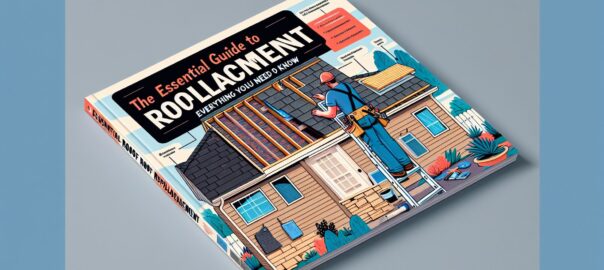When it comes to home maintenance, one of the most significant investments you’ll make is replacing your roof. It’s not just about slapping on some shingles; it’s about protecting your home from the elements, enhancing its curb appeal, and ensuring the safety of your loved ones. In this comprehensive guide, we’ll walk you through every aspect of roof replacement.
Understanding When to Replace Your Roof
The life expectancy of a roof can vary greatly depending on the materials used, the quality of the installation, the climate, and how well it’s been maintained. Typically, an asphalt shingle roof will last between 20 and 30 years, while materials like metal, tile, and slate may have even longer lifespans. Some telltale signs that your roof might need replacing include:
- Missing, cracked or curling shingles.
- A sagging roof deck.
- Signs of water damage or leaking.
- Dark streaks or moss, which might indicate decay.
However, to truly gauge the condition of your roof, it’s wise to appoint a professional for a thorough inspection.
Selecting the Right Materials for Your Roof Replacement
When deciding on roofing materials, consider aesthetics, durability, cost, and local climate. Here’s a brief overview of the options:
Asphalt Shingles
They’re affordable, easy to install, and come in various colors, making them a popular choice for homeowners.
Metal Roofing
Metal roofs are renowned for their longevity, energy efficiency, and ability to withstand extreme weather conditions.
Tile Roofing
Clay or concrete tiles add texture and elegance to a roof and offer excellent durability and fire resistance.
Slate Roofing
A slate roof is one of the most durable options available, offering a natural look with each slate shingle’s unique texture and coloration.
Wood Shake Roofing
Wood shakes provide a classic aesthetic, blending in with natural surroundings and aging to a distinctive silver-gray.
Flat and Low Slope Roofing
These require different materials and installation techniques to ensure proper water drainage and durability.
Pitched Roofing
For high-pitch roofs, the material must not only complement the architecture but also withstand the greater angles’ gravitational forces.
Choosing a Trusted Roofing Contractor
A roof replacement is only as good as the contractor who installs it. Ensure the roofing company you choose is licensed, insured, and has a solid reputation. Look for reviews, ask for references, and don’t hesitate to ask plenty of questions about their experience and process.
The Roof Replacement Process Explained
Roof Inspection and Estimate
A contractor will evaluate your current roof’s condition to determine the need for replacement and provide you with an estimate of the cost.
Material Selection
Once you’ve decided to proceed, you’ll choose the materials that best suit your needs and aesthetics.
Preparation
The work area will need to be cleared, which might include removing the old roofing materials and ordering a dumpster for waste.
Installation
This step involves installing underlayment, flashing, shingles, or other roofing materials, and proper sealing and fastening.
Finishing Touches
After the main installation, additional components such as gutters, fascia, and soffits are addressed.
Financial Considerations
Replacing your roof is a notable financial commitment. Various factors influence the final price, including material choice, roof size, and labor costs. Quality should not be compromised for cost, as a well-done roof will last longer and provide better protection. Many roofing companies offer financing options to assist you in managing this expense.
Roofing Warranties and Insurance
Most quality roofs come with a manufacturer’s warranty, which typically covers defects in the roofing materials, and a workmanship warranty from the contractor to cover installation issues. Be sure to understand the terms and conditions of these warranties. Additionally, working with your insurance company can provide coverage in certain situations, and it’s important to know what is included in your policy ahead of any incidents.
Maintaining Your New Roof
Once your roof is replaced, regular maintenance is key to prolonging its lifespan. This includes:
Regular Inspections
It’s advisable to inspect your roof at least twice a year and after any major storm.
Immediate Repairs
Address issues like leaks or damaged shingles immediately to prevent more extensive damage.
Proper Ventilation and Insulation
These aspects are crucial for preventing heat and moisture buildup that can damage your roof.
The Importance of Safety and Regulations
Roofing replacement is governed by various safety standards and building codes to ensure the work is carried out safely and correctly. Professional roofers are trained to adhere to these regulations and should employ appropriate roofing techniques and safety equipment to prevent accidents and ensure a long-lasting roof.
Your roof is your first line of defense against the elements, so when it comes time for a replacement, it’s essential to be well-informed and make strategic decisions. By understanding the signs of wear, choosing the right materials, selecting a reputable contractor, and keeping abreast of maintenance and warranties, your new roof will be a sound investment in your home’s future. Remember, a well-chosen roof not only provides shelter but also peace of mind for many years to come.
